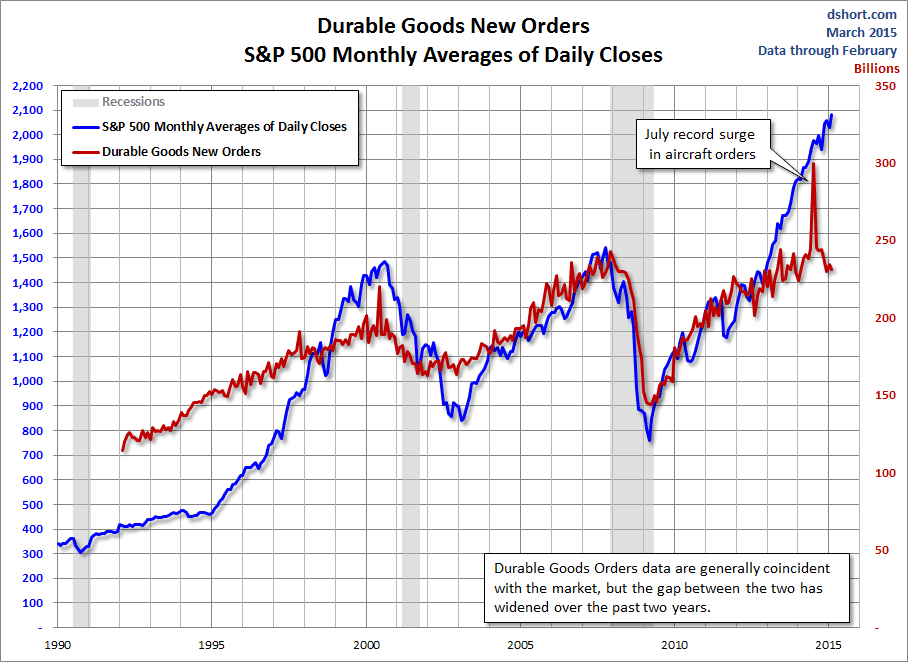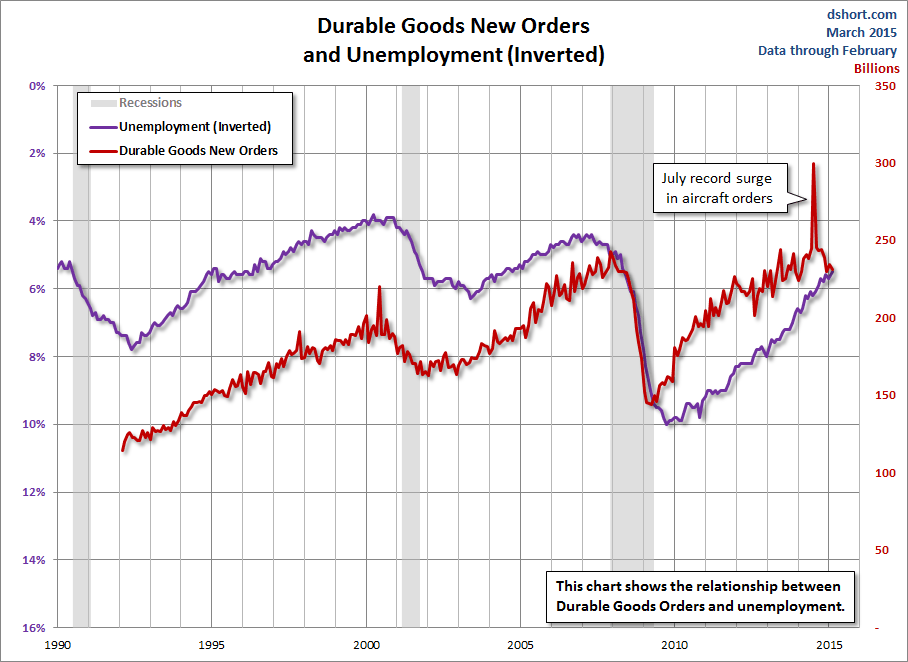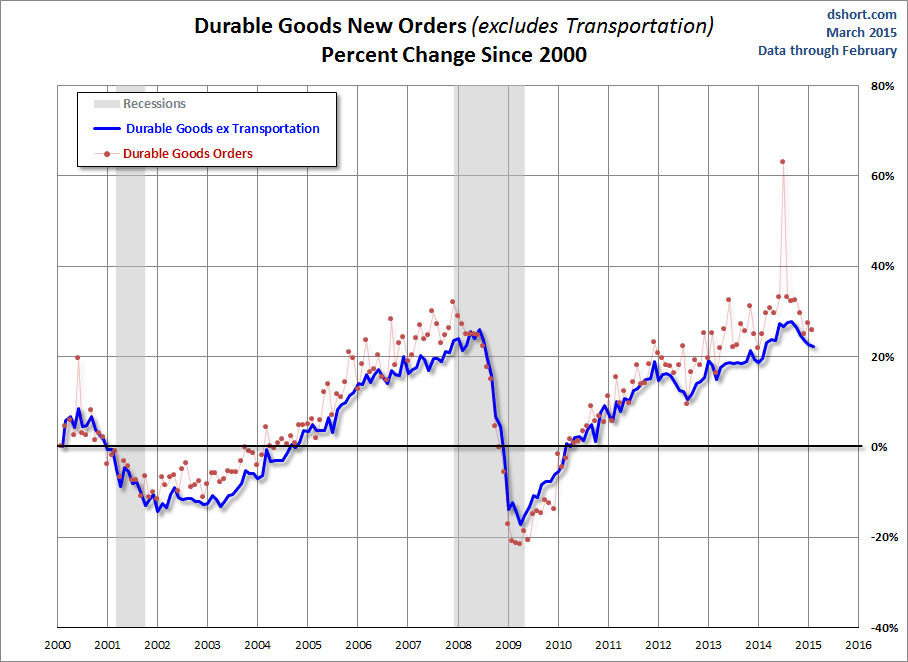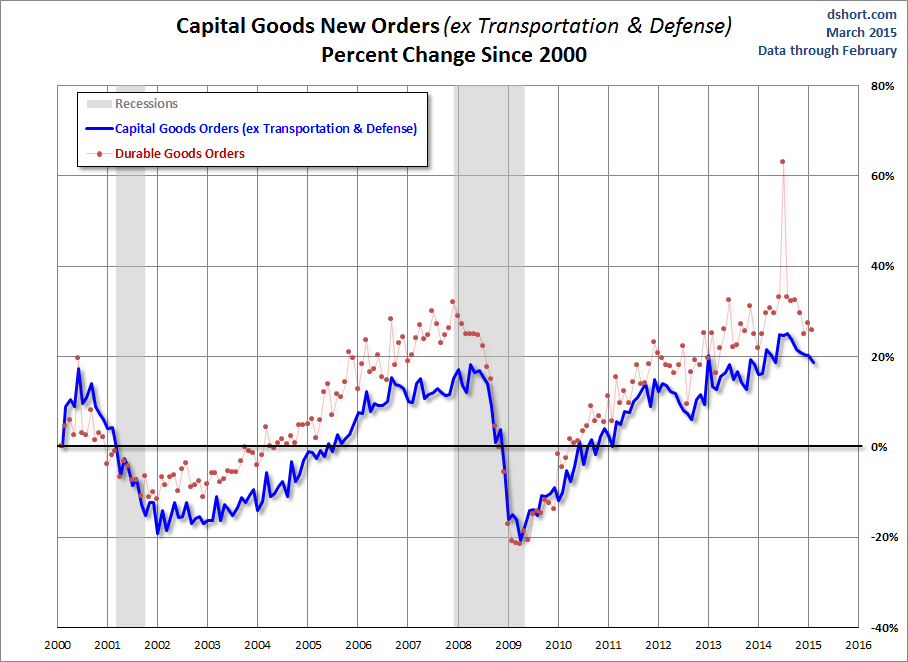The March Advance Report on February Durable Goods released today by the Census Bureau was quite disappointing. Here is the Bureau's summary on new orders:
New orders for manufactured durable goods in February decreased $3.2 billion or 1.4 percent to $231.3 billion, the U.S. Census Bureau announced today. This decrease, down three of the last four months, followed a 2.0 percent January increase. Excluding transportation, new orders decreased 0.4 percent. Excluding defense, new orders decreased 1.0 percent.
Transportation equipment, also down three of the last four months, led the decrease, $2.5 billion or 3.5 percent to $69.5 billion. Download full PDF
The latest new orders headline number at -1.4 percent was well below the Investing.com estimate of 0.4 percent. This series is up only 0.6% percent year-over-year (YoY). However, if we exclude transportation, "core" durable goods came in at -0.4 percent month-over-month (MoM) and has contracted for five consecutive months.
On a brighter note, if we exclude both transportation and defense for an even more fundamental "core", the latest number was up 0.2 percent MoM, snapping five months of contraction.
The Core Capital Goods New Orders number (nondefense capital goods used in the production of goods or services, excluding aircraft) is an important gauge of business spending. It posted a -1.4% decline, and with the downward revision to the previous month, it has contracted for six consecutive months. The downward trend can be attributed to Dollar strength and weakening global demand.
The first chart is an overlay of durable goods new orders and the S&P 500. We see an obvious correlation between the two, especially over the past decade, with the market, not surprisingly, as the more volatile of the two. Over the past year, the market has certainly pulled away from the durable goods reality, something we also saw in the late 1990s.

An overlay with unemployment (inverted) also shows some correlation. We saw unemployment begin to deteriorate prior to the peak in durable goods orders that closely coincided with the onset of the Great Recession, but the unemployment recovery tended to lag the advance durable goods orders.

Here is an overlay with GDP — another comparison I like to watch.

The next chart shows the percent change in Core Durable Goods (which excludes transportation) overlaid on the headline number since the turn of the century. This overlay helps us see substantial volatility of the transportation component.

Here is a similar overlay, this time excluding Defense as well as Transportation (an even more "core" number).

This last chart is an overlay of Core Capital Goods on the larger series. This takes a step back in the durable goods process to show Manufacturers' New Orders for Nondefense Capital Goods Excluding Aircraft.

In theory the durable goods orders series should be one of the more important indicators of the economy's health. However, its volatility and susceptibility to major revisions suggest caution in taking the data for any particular month too seriously.
